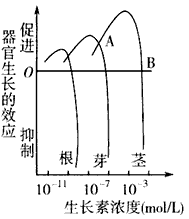
Where Have All the Frogs Gone? In the 1980s, scientists around the world began to notice something strange: Frogs were disappearing. More recent research has shown that many kinds of amphibians (两栖动物)are declining or have become extinct. They have been around for a long time — over350 million years. Why are they dying out now? Scientists are seriously concerned about this question. First of all, amphibians are an important source of scientific and medical knowledge. By studying amphibians, scientists have learned about new substances that could be very useful for treating human diseases.Further research could lead to many more discoveries, but that will be impossible if the amphibians disappear. The most serious aspect of amphibian loss, however, goes beyond the amphibians themselves. Scientists are beginning to think about what amphibian decline means for the planet as a whole. If the earth is becoming unlivable for amphibians, is it also becoming unlivable for other kinds of animals and human beings as well? Scientists now believe that amphibian decline is due to several environmental factors. One of these factors is the destruction of habitat, the natural area where an animal lives. Amphibians are very sensitive to changes in their habitat. If they cannot find the right conditions, they will not lay their eggs. These days, as wild areas are covered with houses, roads, farms, or factories, many kinds of amphibians are no longer laying eggs. For example, the arroyo toad (蟾蜍)of southern California will only lay its eggs on the sandy bottom of a slow-moving stream. There are very few streams left in southern California, and those streams are often muddy because of building projects. Notsurprisingly, the arroyo toad is now in danger of extinction. There are a number of other factors in amphibian decline. Pollution is one of them. In many industrial areas, air pollution has poisoned the rain, which then falls on ponds and kills the frogs and toads that live there. In farming areas, the heavy use of chemicals on crops has also killed off amphibians. Another factor is that air pollution has led to increased levels of ultraviolet (UV) light. This endangers amphibians, which seem to be especially sensitive to UV light. And finally, scientists have discovered a new disease that seems to be killing many species of amphibians in different parts of the world. All these reasons for the disappearance of amphibians are also good reasons for more general concern. The destruction of land, the pollution of the air and the water, the changes in our atmosphere, the spread of diseases — these factors affect human beings, too. Amphibians are especially sensitive to environmental change. Perhaps they are like the canary(金丝雀) bird that coal miners once used to take down into the mines to detect poisonous gases. When the canary became ill or died, the miners knew that dangerous gases were near and their own lives were in danger.Coal miners once used the canary bird to detect A poisonous gases.B air pollution,C water leakage.D radiation.
相关热点: 金丝雀


相关问题推荐
A.麻婆豆腐是四川菜中的名品
B.通常所说的燕窝是一种金丝雀筑的巢
C.满汉全席汇集了宫廷满席和汉席的精华,是中华美食的缩影
D.烹饪食物用的五香是指丁香、茴香子、八角、桂皮、胡椒
在应用程序发布推广给所有人之前,先试着把它发布给一小部分人使用,这种发布叫做()
A、蓝绿部署
B、金丝雀部署
C、UAT部署
D、持续部署
下图表示植物不同器官对生长素的反应。请据图回答:

(1)A点所对应的生长素浓度对茎生长的效应是___\_,对芽生长的效应是_______。(2)某生物兴趣小组开展“萘乙酸(生长素类似物)促进某种植物插条生根的最适浓度是多少”的探究实验,按照下表设计浓度梯度(单位:mol/L):

为了进一步准确地测定最适浓度,应当采取什么改进措施?__\_在农业生产上用萘乙酸溶液浸泡植物插条生根时,除了考虑最适浓度外,还应考虑的因素有________(至少回答两点)。(3)有人发现在植物根的向地性弯曲部位除了生长素的分布不同外,在近地侧同时也集中了大部分的乙烯,由此可知:植物的生长发育过程是_______的结果。(4)在植物的生长发育过程中,达尔文在研究生长素时,将带有尖端的金丝雀虉草的胚芽鞘(A)和除去尖端的金丝雀虉草的胚芽鞘(B)置于单侧光下,结果A弯向光源生长,B不生长也不弯曲,该实验的推论是__\_。植物的向光性对植物叶片生长的意义是________。
1880年首次用金丝雀菸草(phalaris)进行向光性实验的是__\_。1928年首次从燕麦胚芽鞘尖分离出与生长有关的物质的是___\_。黑泽英一(E.Kurosawa)在1926年研究___\_时发现了赤霉素。1955年,___\_等人首次从高压灭菌的鲱鱼精子DNA中分离出___\_。D.C.Lethan和C.0.Miller在1963年首次从未成熟玉米子中分离出天然的细胞分裂素物质,即______。
